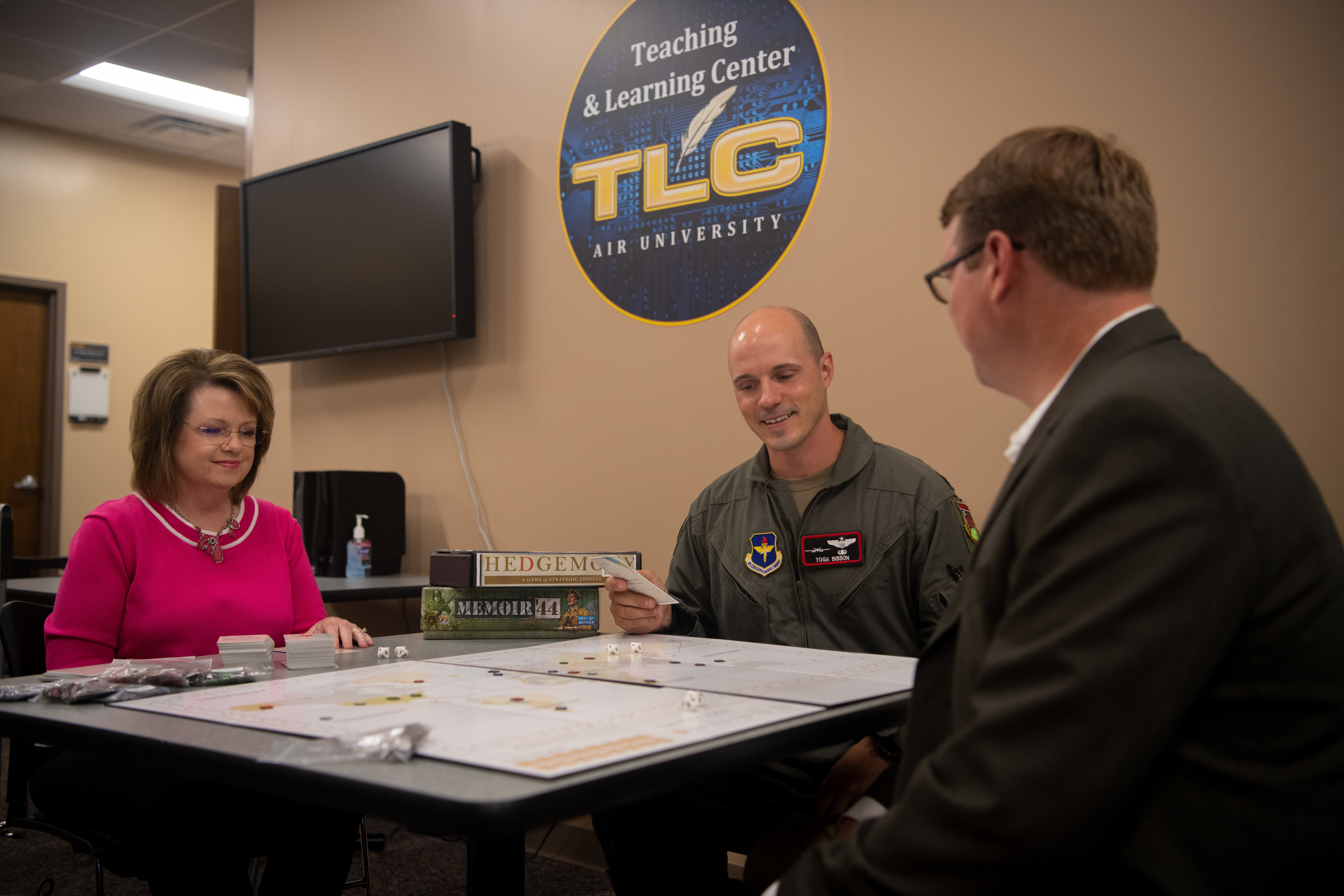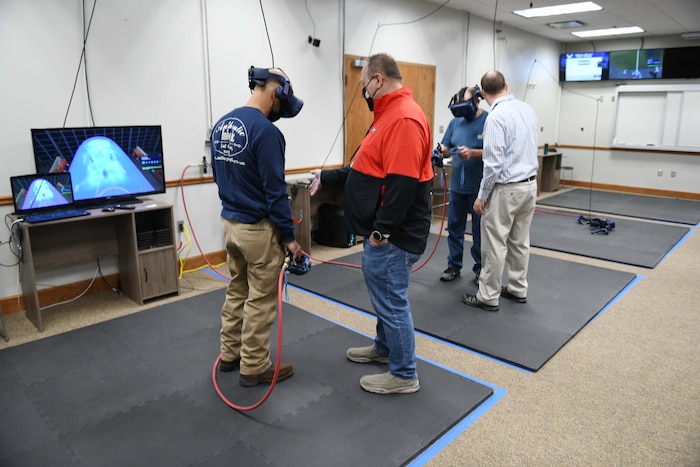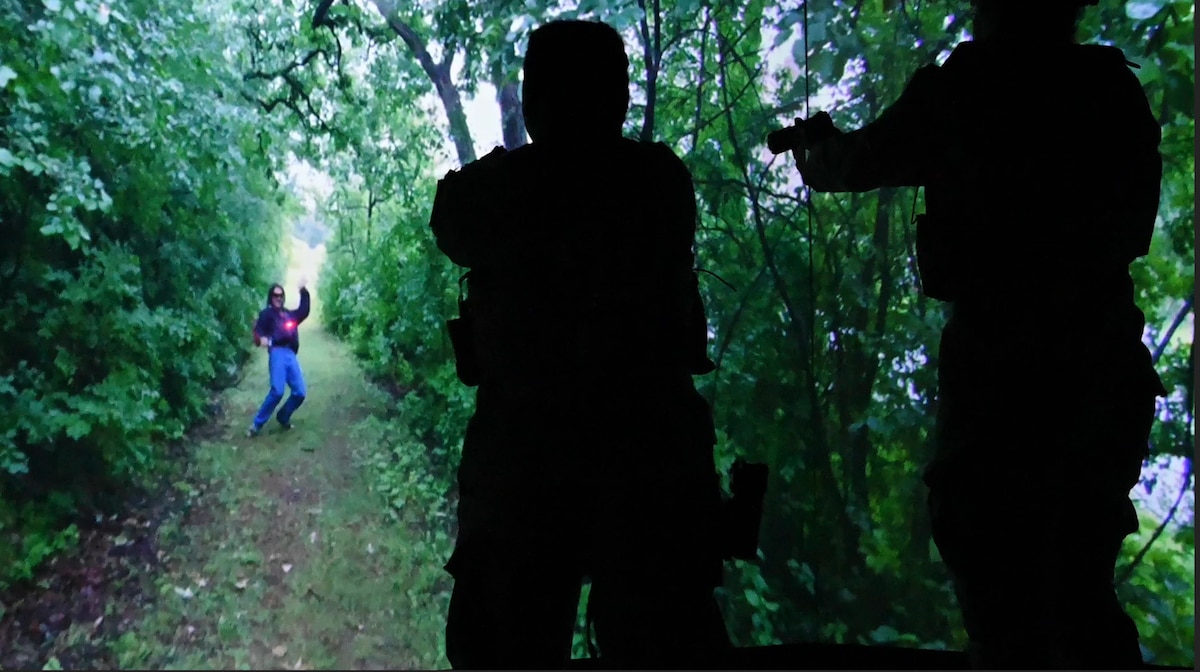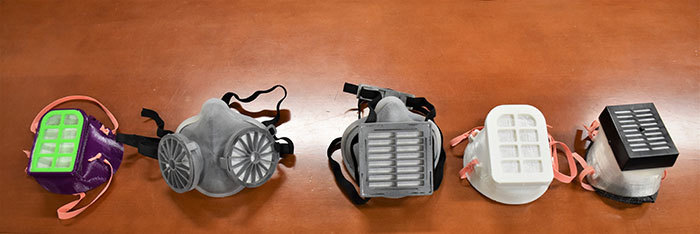 AU Library
AU Library
|
The Innovation Lab is a creative space featuring advanced technology and resources to help promote learning, teaching, problem solving, research, and invention. Available equipment and services:
Free and available by appointment for official use to AU students, faculty, and federal employees with a valid Library account. |
Source: AU Public Affairs |

Requires a signed form AF 1297, available at the Library.
See all other available items here.

Requires a signed form AF 1297, available at the Library.
See all other available items here.

Requires a signed form AF 1297, available at the Library.
See all other available items here.

Requires a signed form AF 1297, available at the Library.
See all other available items here.

Not available for checkout, but available for use in the Innovation lab at AU Library.

Not available for checkout, but available for use in the Innovation lab at AU Library.

Requires a signed form AF 1297, available at the Library.
See all other available items here.

Requires a signed form AF 1297, available at the Library.
See all other available items here.

MindGym offers sensory deprivation and bio-responsive mindfulness training to anyone with base access.
MindGym is equipped with ergonomic chairs and helmets that utilize electroencephalogram, or EEG, technology to monitor physiological indicators, including electrical brain waves, heart rate, respiration rate and heart variability.
Guided mindset training sessions, lasting between 10 to 20 minutes, aim to assist users in transitioning their mental state through light and sound, promoting relaxation, inner exploration, and contemplative practices.

Maj. Gen. Bret Larson, Commander of the 22nd Air Force, flies a MH-139A Grey Wolf helicopter in virtual reality simulator at the Air University Library on Maxwell Air Force Base, Alabama May 14, 2022. His visit was in part, to see the changes the 908th would need to undertake to prepare for its new flying mission.

Air University is moving into gamification to help improve the standards of learning and modernize the teaching environment. Gamification’s goal is to reinforce topics or concepts in curriculum while simulating practical-use scenarios. The library also supports gamification through resources available for anyone, including gaming laptops, game-based learning guides, flight simulator, virtual reality equipment and board games.

Staff Sgt. Ricardo B. Magana, an instructor assigned to the 344th Training Squadron, Detachment 1, Vehicle Management School, demonstrates SMAW welding methods in the flat position employing augmented reality at Naval Base Ventura County-Port Hueneme, California, Jan. 21, 2022. SMAW stands for Shielded Metal Arc Welding, commonly known as "stick" welding. The simulators increase a student’s psychomotor retention of welding positions and decreases risk.

Local Air Force members are getting a new and innovative way to train. MGMWERX, along with Air University, held an Augmented Reality and Virtual Reality Expo to introduce their new training simulations. (U.S. Air Force photo by William Birchfield, taken at Air University Library)

The Air University Library and Immersive Learning and Simulation Research Task Force received a Pilot Training Next simulator at the Air University Library Innovation Lab, Oct. 28, 2021. Students will be able to familiarize themselves with walk around inspections, instruments, flying patterns and procedures, while instructors and coaches get real-time data read outs and give black box debriefings. “The PTN leverages the latest virtual reality technology to train students and is available for use anytime at Air University Library, including courses taught in our virtual reality classroom,” said Alisha Miles, director of the AU Library. “We’re optimistic that faculty from all around the university will integrate the PTN and our other tech gear in the innovation lab directly into the curriculum to add the benefits of immersive learning.” (U.S. Air Force photo by William Birchfield)

Painters with the 588th Aircraft Maintenance Support Squadron Corrosion Control shop at Robins Air Force Base, Georgia, are some of the first to do their refresher paint training in a virtual paint simulator. “The warfighter is going to be benefited because we are going to be able to turn aircraft around quicker with less rework,”... “It will essentially be a factory finish when it comes back to them.” "They will use this while actually painting on the aircraft to further develop muscle memory and spray technique. This is important because it continuously reinforces what was learned in the classroom."

|
CSAF Innovation Letter to Airmen, 17SEP2021 Airmen, Since the dawn of airpower, Airmen and innovation instinctively aligned to create the world's dominant Air Force. However, diminishing competitive advantage threatens our national security. This is why I wrote Accelerate Change or Lose. Just as the very first Airmen supporting the trench warfare of World War I lived by the mantra of "over, not through," Airmen today must lead the innovative change required to secure our nation tomorrow. In my first year, I've witnessed Airmen doing this worldwide; from using local additive manufacturing to rapidly reconstitute aircraft here at home, to slimming down the footprint necessary to achieve air superiority in austere environments overseas. We must continue building upon this momentum. Innovation is more than a buzzword—it goes beyond just creative thinking and lofty expectations. It is evolutionary or revolutionary changes to existing processes, capabilities, and mindsets. To succeed, we must properly identify problems, empower decentralized solutions by individuals and teams, and infuse an ethos of innovation at all levels. Innovation depends on both creative individuals and supportive organizations to turn concepts into reality. Keep in mind that our Airmen, at all levels, already identify innovative solutions to address complex problems and drive modernization. If they do not have the answer yet, they will be the ones to discover it, given the right environment. I expect leaders, from front-line supervisors to MAJCOM commanders, to provide the intent and authority critical to creating an environment that allows experimentation and encourages innovated Airmen. The Air Force needs a culture underwritten with empowerment and trust. Airmen need their leaders to be their early supporters and early adopters. Not all ideas will be practical; some will be prioritized over others, some will be shelved, and not all of them will be perfect—that is okay. An idea that is never presented is worse than an idea that does not work. Innovation requires courage, and rewards tenacity; we must iterate to find the best solution. For those that are truly innovative, setbacks are fully expected. The lessons learned during those attempts are necessary parts of the process and frequently serve as springboards for further improvements. This is why we debrief. Remember, we value boldness and initiative. We need both innovative Airmen and their supportive leaders to achieve "over, not through" approaches for the 21st century. This takes an innovative ethos, this takes courage and creativity—this takes you! CHARLES Q. BROWN, JR. General, USAF Chief of Staff |

On June 7, 2022, the sound of gunshots rang down the halls of a former civil engineering building at Maxwell Air Force Base’s Gunter Annex. Most people would have instinctively called security forces, but members of the 908th Airlift Wing's Security Forces Squadron were already on the scene, training in a virtual reality simulator where they put their use of force reasoning to the test. "It's quite the experience," said Senior Airman Ricardo Arias, 908th SFS member. "It's not something you're going to get anywhere else. You get what feels like hands-on training in the real world without the risk of injury."

"Leaders from across the 60th Air Mobility Wing at Travis Air Force Base took part in a suicide prevention, virtual reality training test phase Feb. 17 - 19, 2021. The 30-minute training is aimed to help Airmen’s comfort in engaging with others to prevent suicide. The training involves participants putting on a virtual reality headset and entering a scenario in which they interact with a person who is in obvious emotional distress. The goal is for the participant to convince the distressed person to get help. If participants don’t ask the distressed person the right questions to prompt them to get help, a training coach chimes in to assist the participant." (U.S. Air Force video by Nicholas Pilch)

Senior Airman Alexander Luttrell, 341st Contracting Squadron contracting specialist, tests drafting software with a virtual reality headset in the Wing1Werx Innovation Lab, Dec. 15, 2020, at Malmstrom Air Force Base, Mont. The overarching goal of the Innovation Lab is to improve the daily working lives of Airmen and to serve the mission by improving wing efficiency and lethality through innovative thinking. (U.S. Air Force photo by Airman Elijah Van Zandt)

Luke Airmen working with an Arizona State University student...teamed to adapt Microsoft HoloLens2 smartglasses into a tool aircrews can use to conduct detailed mission debriefs from an interactive, three-dimensional perspective. The debrief process “is literally fundamental to how we learn every time we go out to train and fly,” said Hawkins. “We think it’s going to be really effective because we are able to see if the student pilots understand the information or not.” “Right now, if I want to debrief with someone who flew a mission from a different base we'd have to do that over the telephone...but imagine if you put these headsets on and could debrief virtually; and, both could see the same thing at the same time. That would make it a much more efficient process.”

"Our group has been working on what is called an elastomeric half-mask respirator, which is a reusable frame produced by a 3D printer, with a disposable media or cartridge that filters at the 95% level." (Defense.gov)

Need to check for fuel leaks? There's a 3D-printed tool for that. The pressurized leak detection cup will cut the number of hours needed to detect for fuel tank leaks on the KC-135 by up to 75 percent, saving at least $1.5 million at RAF Mindenhall alone. (Popular Mechanics) SSgt. Patrick Leach developed this tool to save man hours and reduce time inside the hazardous fuel tank. The item is in line for printing and display in AU Library's Innovation Lab.

The Fairchild Research Information Center loaned their 3-D printer to the effort to source and manufacture over 8000 shield masks. These were delivered to institutions in 25 counties across central Alabama including hospitals, nursing homes, police, fire fighters, EMTs, and corrections officers. (Air Force)

Using the 3D printer in the Innovation Lab at the AU Library, research assistants have developed prototype parts for the Air Force Reserve’s 908th Airlift Wing at Maxwell. Getting a replacement part from the original manufacturer would cost roughly $300 and an untold amount of time to get; however, Capt. Ian Watkins was able to manufacture the prototype in about four hours for less than $2 in materials. (Air Force)

The first 3D printed aircraft parts authorized for use are on display at Travis Air Force Base, CA. The printer, which is certified by the FAA and the AF Advanced Technology and Training Center, offers new opportunities to create needed parts while saving time and money. “The covers we just printed usually take about a year from the time they’ve been ordered to the time they’ve been delivered…We printed two of the covers in 73 hours.” (Air Force)

An ACSC Major developed a hands-free flak vest mount for a mobile device. Using AU Library’s 3D printer, the Major produced a rugged device holder that flips down to display battlefield information and allows the user to mark targets. The prototype has been finalized for production. (AU Library)

The Smithsonian Museum digitally preserved Neil Armstrong’s entire Apollo 11 space suit through 3D scanning and photogrammetry. Using the AU Library’s 3D printer, Library staff replicated the left gauntlet from the Smithsonian’s digital model. Fine details such as fabric textures, folds, and stitching were preserved in the copy, an example of the high precision and fidelity possible with this technology. (Smithsonian, AU Library)